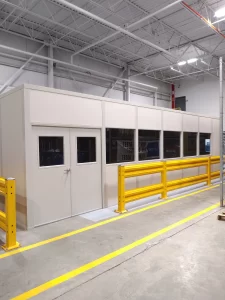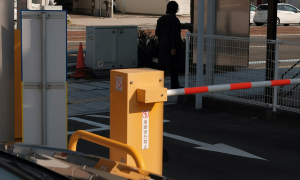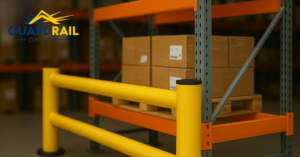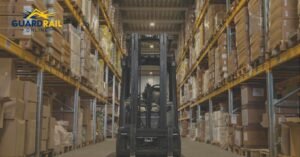Warehouse barriers in Oklahoma don’t just divide space. They are what separates a safe workspace from an unsafe one. Barriers act as the physical line between protection and potential disaster in environments filled with moving forklifts, shifting pallets, and fast-paced workflows. They stop collisions from turning into costly damage, shield workers from fast-moving equipment, and prevent accidental access to restricted zones.
But what happens when the safety barriers themselves begin to fail? Even the best-installed safety barriers are not immune to wear and tear. Time, impact, weather exposure, and vibration gradually take a toll on the condition of your forklift barriers. Moreover, things like rust, loose anchors, and minor cracks might seem harmless at first. However, when left unaddressed, they slowly compromise the entire protective system.
That’s why timely repairs are not just a maintenance task. Instead, they are a critical part of your warehouse’s risk management strategy. But how would you know if your warehouse safety barriers need to be repaired? This guide aims to help you recognize early signs of damage.
Paint Chipping That Looks Harmless, But Isn’t
At first glance, chipped paint might seem like a purely cosmetic issue. Maybe it makes your warehouse barriers in Oklahoma look a little worn out. But does it really matter? The short answer is yes, it does! That paint isn’t just for show. It’s your barrier’s first line of defense against rust, corrosion, and environmental wear.
Moisture has a direct route to the metal underneath once that outer layer of your warehouse safety barriers starts peeling away. And what follows? Rust and corrosion isn’t just unpleasant to look at. It actually leads to creation of weak spots that you won’t notice until a forklift makes contact and the barrier gives out sooner than expected.
Over time, even the toughest steel can wear down when unprotected against rust and corrosion. This is especially true in areas prone to spills, chemical exposure, or humidity. So if you notice flaking paint, don’t dismiss it as “just aging.” It’s your barrier’s way of signaling that it’s losing its protective shell. Prompt and early actions can help restore its durability and extend the life of your entire barrier system. So, schedule a maintenance crew for sanding, recoating, or maybe think about replacing the affected section. Such minor upkeeps will spare you major repairs later.
Surface Cracks That Signal Structural Warning Signs
Ever noticed faint hairline cracks along your warehouse barriers in Oklahoma but ended up brushing them off as harmless wear and tear? That’s where trouble begins. These surface cracks often form after repeated low‑impact bumps from warehouse forklifts, especially in busy zones where barriers take minor hits daily. Over time, these repeated nudges start creating stress lines in the barrier material.
Surface damage can seem harmless at first glance. But those tiny cracks are actually your early warning signs of damage. If ignored, those tiny fractures can spread under pressure, leading to full-on splits or buckling during future impacts. These exact cracks are bound to widen when temperature changes or vibrations persist. These would then end up turning safe zones into accident zones.
Cracks deeper than a few millimeters, or ones that reappear after repairs, mean the surface is no longer absorbing force as it should. Prompt repairs will prevent further damage and restore your barrier’s strength. So, it is smart to get the maintenance crew lined up for sealing, welding, or reinforcing the crack. Acting early would end up keeping your safety measures reliable. Moreover, it will help avoid sudden failures when your team needs protection the most.
Loose Bolts Aren’t Just Annoying—They’re Dangerous
You’d be surprised how often fasteners and bolts become the weak link in your warehouse safety system. They are supposed to lock your barriers tightly to the ground, holding them in place even during frequent forklift traffic. However, these bolts can start to loosen due to vibration, repeated bumps, and even temperature swings. Loosed bolts would cause your warehouse barriers in Oklahoma to wiggle, even after a slight nudge. Without timely bolt repairs, these barriers may end up shifting, tilting or detaching completely.
A shifting barrier may seem minor. However, it can be the reason a forklift slips past its lane or a worker trips mid-shift in your busy facility. The situations can end up worsening if your safety barrier is anchored poorly. Such safety systems can topple when hit, leaving equipment, products, and people exposed.
So, if you spot movement in any section of your barriers or find bolts missing altogether, that’s your cue to take immediate action. Tighten, replace, or re-anchor, whatever may be necessary. Such a simple fix keeps your warehouse barriers in Oklahoma standing strong and doing their job.
Dents That Tell You Your Barrier’s Days Are Numbered
Not all damage to barriers screams for attention. Sometimes, it’s the subtle warping or slowly deepening dent that poses the biggest threat. After all, warehouse barriers are designed to absorb and deflect force. But that protective ability starts to break down when they get bent out of shape.
Wondering why? That’s because a guardrail’s ability to manage impact is seriously compromised once it is no longer straight. So instead of absorbing force, it passes the shock straight to whatever’s behind it. Now, that can be a loaded rack, a busy walkway, or another forklift. The more twisted or caved-in it becomes, the more compromised your system would end up getting. Wouldn’t that all together deceive the purpose of having warehouse barriers in Oklahoma?
Hence, catching these issues early makes all the difference. A quick repair of the warehouse barrier would restore its strength and would help maintain visual clarity for drivers. Ignoring it, on the contrary, ends up escalating the damage and weakening your entire protective setup. In short, dents might seem like a minor inconvenience, but they are structural red flags in reality.
Hearing Snaps on Impact? Your Barrier Might Be Giving Out
Have you ever heard a sharp crack once when your safety barrier took a hit? If you have, then you should never ignore it. That brittle snapping sound could be more than just noise. It might be your barrier quietly breaking down from the inside.
Strong, well-functioning warehouse barriers in Oklahoma usually produce a dull “thud” noise on impact. A sharp or metallic sounds on the contrary often suggest internal fractures or metal fatigue. That means your barrier is no longer absorbing impact properly. In worst case scenarios, it may very well be a sign that your safety system is on the edge of failure. Such an instance is something that won’t be visible until it’s too late. Moreover, when this happens time is typically not your friend.
The only right move is to pause and investigate your warehouse safety barrier. Get your maintenance team to inspect for hairline cracks or internal splits. Reinforce the area, weld it if needed, and don’t put it back in use until you’re sure it’s structurally sound. After all, you don’t get second chances with barriers in a busy facility. So, it is wise to repair the noise now, or you would have to deal with the damage later.
When Your Barrier Isn’t Aligned, Your Safety Isn’t Either
Warehouse barriers in Oklahoma are not just individual posts and rails. They are actually a connected safety system. This means, like any system, when one part shifts, the whole thing is at risk. With continuous use and with tine, you are bound to notice that two or more sections no longer align properly. Maybe there’s a gap, or maybe one post leans out just slightly. It may not look dangerous at first, but misalignment indeed has serious consequences.
For starters, those gaps in your safety barriers often end up becoming entry points for accidents. When such gaps appear, forklift wheels or pallets can slip right through. Moreover, these gaps can lead to pedestrians tripping over. Or worse, a collision could bypass your entire safety setup. This kind of structural weakness ends up breaking the flow of protection and invites unpredictability. Would you want to risk such incidents?
Realigning your warehouse safety barriers isn’t just about aesthetics. It is actually important to restore the integrity of your safety system. So, one must never wait to fix issues whether it’s about re-anchoring posts, re-drilling holes, or adjusting spacing. Fixing alignment would keep your barriers functioning as one continuous line of defense, instead of some disconnected pieces where you “hope for the best”.
Conclusion
Every warehouse manager wants to believe their barrier system will hold strong forever, but that’s rarely the case. Even the most durable warehouse barriers in Oklahoma require consistent upkeep to function at their best. Timely repairs will prevent smaller issues from turning into major failures. More importantly, they will help extend the lifespan of your entire safety infrastructure.
Repairs can help you stay ahead of the risks, whether addressing loosened fasteners, treating surface cracks, or catching misalignment before it spreads. Small fixes today will prevent major disruptions tomorrow. They will end up saving time, avoiding injuries, and protecting operational flow. Skipping or delaying repairs on the contrary will not just compromise safety. They will also weaken trust across your team and potentially open the door to preventable liabilities.
So, it is best to listen carefully when your barrier shows signs of rust, dents, or movement. After all, the strongest defense is the one you maintain, not the one you ignore.





